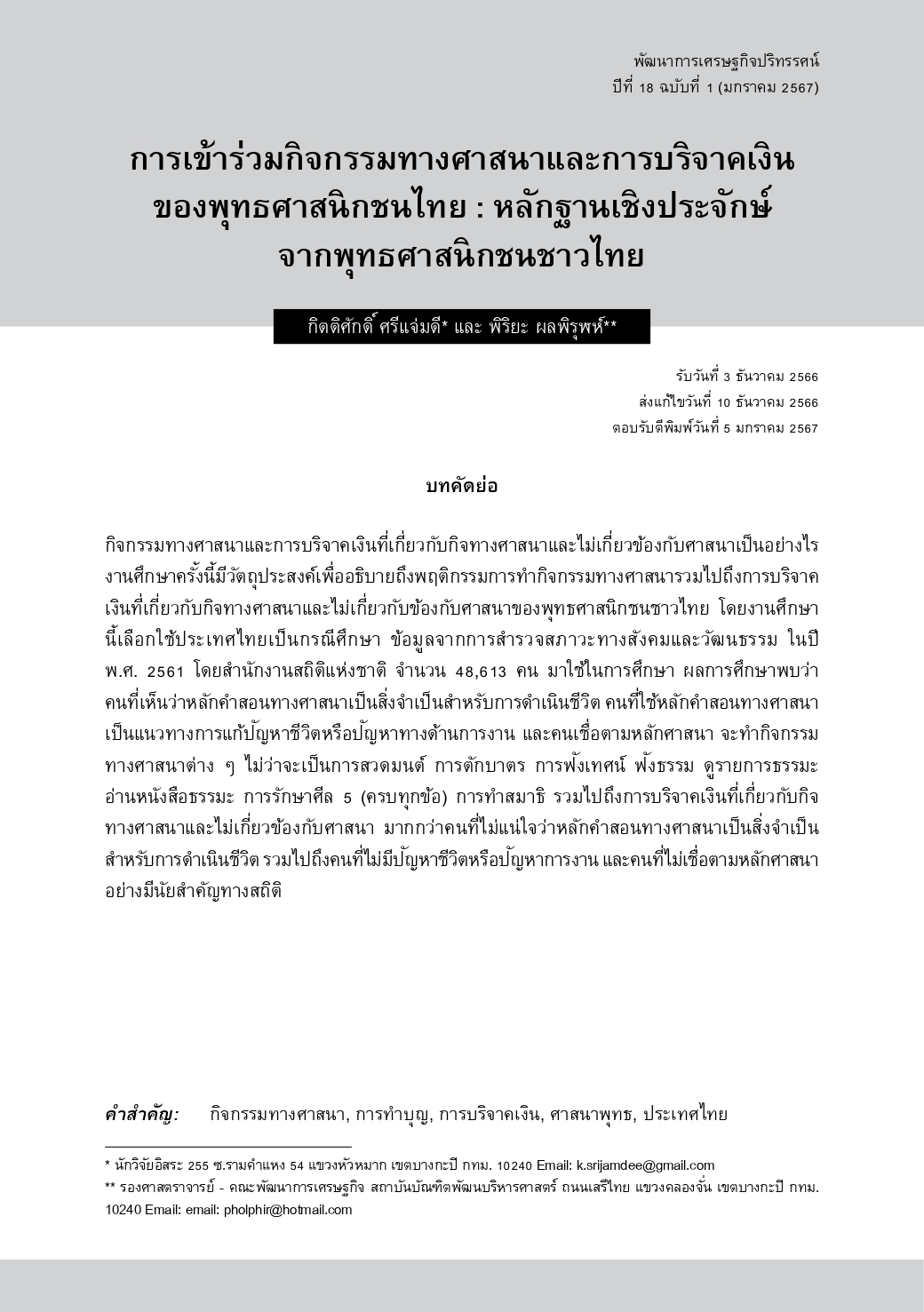Participation in religious activities and donations of Thai Buddhists: Empirical evidence from Thai Buddhists.
Keywords:
กิจกรรมทางศาสนา, การทำบุญ, การบริจาคเงิน, ศาสนาพุทธ, ประเทศไทยAbstract
Religious activities and donations related to religious and non-religious activities? This study aims to provide insights into the religious behaviors of Thai Buddhists, specifically their participation in religious activities and donations related to religious and non-religious causes. The study focused on data collected from a survey of 48,613 individuals conducted by the National Statistical Office in 2018 and used Thailand as a case study. Results showed that individuals who view religion as essential to their daily lives, those who use religious principles to guide their decision-making, and those who follow religious teachings tend to engage in more religious activities such as praying, giving alms to monks, listening to sermons or watching dhamma programs, reading dhamma books, observing the five precepts, and practicing meditation. Additionally, these individuals also tend to donate more to religious and non-religious causes, compared to those who do not consider religion necessary in their lives or do not follow religious principles. The statistical significance of these findings suggests that religious beliefs and practices significantly impact individual behavior in Thailand.
References
Benjamin, D.J., Choi, J.J. & Fisher, G. (2016). Religious Identity and Economic Behavior. The Review of Economics and Statistics, 98(4), 617-637.
Degasperi, N.C. & Mainardes, E.W. (2017). What Motivates Money Donation? A Study on External Motivators. Revista de Administração, 52(4), 363-373.
Kashif, M. & De Run, E.C. (2015). Money Donations Intentions Among Muslim Donors: An Extended Theory of Planned Behavior Model. International Journal of Nonprofit and Voluntary Sector Marketing, 20(1), 84-96.
Iannaccone, L.R. (1998). Introduction to the Economics of Religion. Journal of Economic Literature, 36(3), 1465-1496.
Mccleary, R.M. (2007). Salvation, Damnation, and Economic Incentives. Journal of Contemporary Religion, 22(1), 49-74.
Ranganathan, S.K. & Henley, W.H. (2008). Determinants of Charitable Donation Intentions: A Structural Equation Model. International Journal of Nonprofit and Voluntary Sector Marketing, 13(1), 1-11.
Yao, K. & Guillén, M.F. (2015). Who Gives? The Determinants of Charitable Giving, Volunteering, and Their Relationship. Wharton School Working Paper. Retrieved from https://core.ac.uk/reader/76387436.
Zubairi, F.H. & Siddiqui, D.A. (2019). Factors Influencing Donation Behavior: The Role of Seasonal Effects. SSRN Electronic Journal, Retrieved from https://ssrn.com/abstract=3444113 or http://dx.doi.org/10.2139/ssrn.3444113.

Downloads
Published
Issue
Section
License
Copyright to published manuscripts becomes the property of the Graduate School of Development Economics, National Institute of Development Administration. Reproduction of all or part of a Development Economic Review (DER) article by anyone, excluding author(s), is prohibited, unless receiving our permission.
Disclaimer: Opinions expressed in articles published in this journal are those of the author (s) and do nto necessarily represent opinions of the Graduate School of Development Economics, National Institute of Development Administration. Trade and proprietary names are only for identification and not constitute our endorsement.

